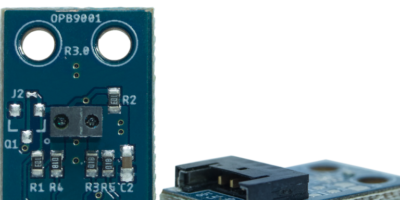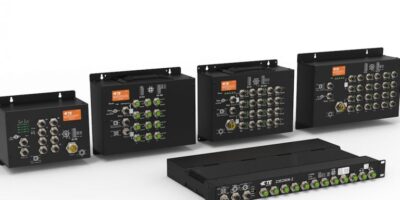For industrial and medical applications, TT Electronics has launched a low profile reflective object sensor in PCB assembly. The OPB9001 module offers 24 to 30V input compatibility and features four-pin connectors for simple programming and operation.
The OPB9001 PCB module includes the OPB9000 reflective sensor and eliminates the need for peripheral circuitry like resistors, regulators and capacitors which are integrated into its small, robust package, explains TT Electronics.
The reflective sensor can detect objects as far away as 50mm using standard 90 per cent reflective material as well as objects as small as 2.5mm, depending on the object distance. The OPB9001 can also be programmed to recognise various distances within its reflective range.
“Industrial applications often require flexible customised solutions in order to accommodate the dynamic needs of each environment,” said Raymund Chua, product line director, Optoelectronics, TT Electronics. “The OPB9001 product family is capable of directly accepting higher input voltage and can be customised to maximise flexibility and compatibility — even in the most robust and demanding industrial use cases.”
All analogue signal conditions are incorporated into OPB9001’s integrated OPB9000 IC and PCB assembly. The OPB9001 module is equipped with an integrated connector for ease of mounting on PCBs and panels, adds TT Electronics.
TT Electronics provides engineered electronics for performance-critical applications. The company employs nearly 5,000 members of staff, operating from 29 key locations around the world. TT designs and manufactures a wide range of electronics for sensing, power management and connectivity for applications in the industrial, medical, aerospace and defence and transportation sectors.







